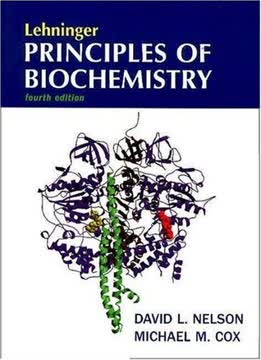Key Takeaways
1. Cells Rely on Weak Interactions and Water's Unique Properties
The interplay among the chemical components of a living organism is dynamic; changes in one component cause coordinating or compensating changes in another, with the whole ensemble displaying a character beyond that of its individual parts.
Water's solvent role. Water, comprising 70% or more of a cell's weight, is crucial due to its unique properties arising from hydrogen bonding. These bonds create cohesion, high surface tension, and solvent capabilities, allowing polar biomolecules to dissolve and interact dynamically within cells.
Weak forces define life. Individually weak, noncovalent interactions such as hydrogen bonds, ionic interactions, hydrophobic interactions, and van der Waals forces collectively dictate the structure and function of biomolecules. These interactions are essential for the dynamic interplay between cellular components.
Dynamic equilibrium. Living organisms exist in a dynamic steady state, constantly exchanging matter and energy with their surroundings. This state, far from equilibrium, is maintained by the constant investment of energy and the interplay of chemical components, showcasing the remarkable properties of living matter.
2. Carbon's Versatility Underpins the Diversity of Biomolecules
The chemical “personality” of a compound is determined by the chemistry of its functional groups and their disposition in three-dimensional space.
Carbon's bonding prowess. Carbon's ability to form stable bonds with itself and other elements, creating diverse molecular architectures, is fundamental to life. These carbon skeletons, adorned with various functional groups, give rise to the vast array of biomolecules with specific chemical properties.
Functional groups define properties. Functional groups such as hydroxyl, amino, carbonyl, and carboxyl groups dictate the chemical behavior of biomolecules. The arrangement of these groups in three-dimensional space further refines their properties, influencing their interactions and biological roles.
From hydrocarbons to life. Most biomolecules can be viewed as derivatives of hydrocarbons, with hydrogen atoms replaced by functional groups. This chemical versatility allows for the creation of molecules with widely different sizes, shapes, and chemical characteristics, essential for the molecular machinery of cells.
3. Life's Building Blocks Assemble into Complex Hierarchies
A single bacterial cell placed in a sterile nutrient medium can give rise to a billion identical “daughter” cells in 24 hours.
Monomers to macromolecules. Small organic molecules, including amino acids, nucleotides, and sugars, polymerize to form macromolecules like proteins, nucleic acids, and polysaccharides. These macromolecules, in turn, assemble into supramolecular complexes, creating a structural hierarchy within cells.
Noncovalent assembly. While monomers are linked by covalent bonds, supramolecular complexes are held together by noncovalent interactions. These weak interactions, including hydrogen bonds, ionic interactions, hydrophobic interactions, and van der Waals forces, collectively stabilize the assemblies.
In vitro vs. in vivo. Studying purified molecules in vitro provides valuable insights, but it's crucial to remember that the cellular environment is far more complex. Interactions with other molecules and the organization of the cytoplasm can significantly influence a molecule's function in vivo.
4. Thermodynamics Dictates Energy Flow in Living Systems
We can classify organisms according to how they obtain the energy and carbon they need for synthesizing cellular material.
Open systems. Living organisms are open systems, exchanging both matter and energy with their surroundings. They derive energy from sunlight (phototrophs) or chemical compounds (chemotrophs), using it to build and maintain their intricate structures.
Laws of thermodynamics. The first law dictates that energy is conserved, while the second law states that the universe tends towards increasing disorder (entropy). Living organisms maintain order by extracting energy from their surroundings and releasing heat and simpler compounds, increasing entropy in the universe.
Free energy and spontaneity. The free-energy change (ΔG) determines the spontaneity of a process. Exergonic reactions (negative ΔG) release energy, while endergonic reactions (positive ΔG) require energy input. Cells couple exergonic reactions, such as ATP hydrolysis, to drive endergonic processes.
5. Enzymes Catalyze Reactions by Lowering Activation Energy
Virtually every chemical reaction in a cell occurs at a significant rate only because of the presence of enzymes—biocatalysts that, like all other catalysts, greatly enhance the rate of specific chemical reactions without being consumed in the process.
Enzymes as catalysts. Enzymes are biological catalysts that accelerate specific chemical reactions without being consumed in the process. They achieve this by lowering the activation energy (ΔG‡), the energy barrier between reactants and products.
Transition state stabilization. Enzymes catalyze reactions by providing a more comfortable fit for the transition state, the highest-energy intermediate in the reaction. This complementary fit, based on stereochemistry, polarity, and charge, reduces the activation energy and increases the reaction rate.
Metabolic pathways. Enzymes are organized into pathways, sequences of consecutive reactions in which the product of one reaction becomes the reactant in the next. These pathways are either catabolic (degradative, energy-yielding) or anabolic (synthetic, energy-requiring), and their activity is tightly regulated to maintain balance and economy.
6. DNA's Structure Enables Accurate Replication and Information Storage
The capacity of living cells to preserve their genetic material and to duplicate it for the next generation results from the structural complementarity between the two halves of the DNA molecule.
DNA as the blueprint. DNA, a linear polymer of nucleotides, stores and transmits the genetic information necessary for building and maintaining an organism. The sequence of nucleotides encodes the instructions for forming all other cellular components.
Double helix complementarity. The double-helical structure of DNA, with its complementary base pairing (A with T, G with C), allows for accurate replication and repair. Each strand serves as a template for the synthesis of a new complementary strand.
From DNA to protein. The information in DNA is expressed through a two-step process: transcription, where DNA is copied into RNA, and translation, where RNA is used to direct the synthesis of proteins. Proteins, with their unique three-dimensional structures, carry out most of the functions in a cell.
7. Evolution Explains the Unity and Diversity of Life at the Molecular Level
The remarkable similarity of metabolic pathways and gene sequences in organisms across the phyla argues strongly that all modern organisms share a common evolutionary progenitor and were derived from it by a series of small changes (mutations), each of which conferred a selective advantage to some organism in some ecological niche.
Mutations drive evolution. Infrequent errors in DNA replication lead to mutations, changes in the nucleotide sequence. While most mutations are harmful, some can provide a selective advantage, allowing the organism to better survive and reproduce in its environment.
Chemical evolution. Before the first cells, biomolecules likely arose through chemical evolution, with simple organic compounds forming spontaneously under the conditions of early Earth. RNA, with its ability to both store information and catalyze reactions, may have played a crucial role in this prebiotic evolution.
Common ancestry. The universality of metabolic pathways and gene sequences across diverse organisms points to a shared evolutionary origin. Adaptive selection, combined with genetic variation, has resulted in the vast diversity of life forms we see today, each adapted to its specific ecological niche.
Last updated:
FAQ
1. What is "Principles of Biochemistry" by Albert L. Lehninger about?
- Comprehensive biochemistry overview: The book provides a foundational exploration of the molecular logic of life, detailing how biomolecules interact under physical and chemical laws to sustain living organisms.
- Unity and diversity of life: It emphasizes the shared chemical framework among all organisms, from bacteria to humans, and explores evolutionary relationships and biochemical adaptations.
- Molecular structure and function: The text covers the structure and function of key biomolecules—proteins, nucleic acids, lipids, and carbohydrates—and how their interactions drive life processes.
2. Why should I read "Principles of Biochemistry" by Albert L. Lehninger?
- Essential for life sciences: The book offers a rigorous introduction to biochemistry, crucial for understanding cellular structure, metabolism, and genetic information at the molecular level.
- Integration of evolution and biochemistry: It uniquely combines evolutionary biology with biochemical principles, showing how molecular processes are conserved and adapted.
- Real-world applications: The text links biochemistry to medicine, agriculture, nutrition, and industry, providing insights into practical problems and innovations.
3. What are the key takeaways from "Principles of Biochemistry" by Albert L. Lehninger?
- Cellular and chemical foundations: All cells share core features and maintain a dynamic steady state, with life’s unity reflected in conserved biochemical pathways.
- Physical and genetic principles: The book explains thermodynamics, molecular interactions, and the genetic code, highlighting how DNA encodes and transmits information.
- Evolutionary perspective: It discusses common ancestry, mutation, selection, and endosymbiotic theory, illustrating the evolutionary basis of biochemical diversity.
4. How does "Principles of Biochemistry" by Albert L. Lehninger explain the structure and classification of proteins and amino acids?
- Amino acid diversity: Proteins are built from 20 common amino acids, each classified by side chain properties such as polarity and charge.
- Levels of protein structure: The book details primary, secondary, tertiary, and quaternary structures, showing how sequence determines folding and function.
- Protein folding and stability: It covers the role of chaperones, disulfide bonds, and post-translational modifications in achieving and maintaining functional conformations.
5. What are the main methods for protein purification and analysis in "Principles of Biochemistry" by Albert L. Lehninger?
- Purification strategies: Proteins are separated based on solubility, charge, size, and binding affinity using techniques like chromatography and salting out.
- Electrophoresis techniques: SDS-PAGE and isoelectric focusing are used to analyze protein size and charge, with two-dimensional electrophoresis providing high resolution.
- Activity assays: Enzyme activity is measured throughout purification, with specific activity indicating the degree of purity.
6. How does "Principles of Biochemistry" by Albert L. Lehninger describe enzyme structure, function, and catalysis?
- Enzyme-substrate complex: Enzymes bind substrates at active sites, forming complexes that lower activation energy and accelerate reactions.
- Catalytic mechanisms: The book explains general acid-base, covalent, and metal ion catalysis, as well as transition state stabilization and induced fit.
- Enzyme specificity and regulation: Specificity arises from binding energy, with regulation achieved through allosteric effectors, covalent modification, and proteolytic activation.
7. What are the key principles of enzyme kinetics and inhibition in "Principles of Biochemistry" by Albert L. Lehninger?
- Michaelis-Menten kinetics: The relationship between substrate concentration and reaction rate is described, with parameters like Km and Vmax characterizing enzyme behavior.
- Types of inhibition: Competitive, uncompetitive, mixed, and irreversible inhibitors are distinguished by their effects on kinetic parameters and enzyme activity.
- Kinetic analysis tools: Lineweaver-Burk and other plots are used to determine kinetic constants and analyze inhibition mechanisms.
8. How does "Principles of Biochemistry" by Albert L. Lehninger explain the structure and function of carbohydrates and nucleic acids?
- Carbohydrate diversity: The book covers monosaccharides, polysaccharides, and glycoconjugates, highlighting their roles in energy storage, structure, and cell recognition.
- Nucleic acid structure: DNA and RNA are described as polymers of nucleotides, with double helix structure, base pairing, and backbone chemistry explained in detail.
- Biological roles: Carbohydrates mediate cell signaling and recognition, while nucleic acids store, transmit, and express genetic information.
9. What are the main concepts of membrane structure and transport in "Principles of Biochemistry" by Albert L. Lehninger?
- Membrane composition: Biological membranes are lipid bilayers with embedded proteins, exhibiting asymmetry, fluidity, and specialized domains like lipid rafts.
- Transport mechanisms: The book distinguishes passive (diffusion, facilitated diffusion) and active transport (primary and secondary), with examples like NaK ATPase, GLUT1, and aquaporins.
- Signal transduction: Membrane proteins function as receptors, channels, and enzymes, mediating communication and transport across the membrane.
10. How does "Principles of Biochemistry" by Albert L. Lehninger describe energy metabolism, ATP, and bioenergetics?
- ATP as energy currency: ATP links catabolism and anabolism, providing energy through group transfer rather than simple hydrolysis.
- High-energy compounds: The text discusses other phosphorylated and thioester compounds with high free energies of hydrolysis, such as phosphoenolpyruvate and acetyl-CoA.
- Thermodynamics and regulation: The book explains Gibbs free energy, coupling of reactions, and the role of NAD/NADP in redox reactions.
11. What are the key metabolic pathways and their regulation in "Principles of Biochemistry" by Albert L. Lehninger?
- Central metabolic pathways: Glycolysis, citric acid cycle, fatty acid oxidation, and amino acid degradation are described in detail, with their roles in energy production.
- Metabolic control analysis: The book introduces concepts like flux control coefficients and allosteric regulation, showing how pathway flux is distributed and regulated.
- Hormonal integration: Insulin, glucagon, and epinephrine coordinate metabolism across tissues, maintaining homeostasis and responding to physiological states.
12. How does "Principles of Biochemistry" by Albert L. Lehninger explain genetic information flow, gene expression, and regulation?
- DNA replication and repair: The book details semiconservative replication, leading/lagging strand synthesis, and multiple DNA repair mechanisms.
- Transcription and RNA processing: RNA synthesis, splicing, capping, and polyadenylation are covered, along with the roles of ribozymes and RNA interference.
- Gene regulation: Operons, transcription factors, chromatin remodeling, and developmental gene regulation are explained, highlighting differences between prokaryotes and eukaryotes.
Review Summary
Principles of Biochemistry is highly regarded as a comprehensive and well-written textbook. Readers praise its clarity, depth, and ability to explain complex concepts. Many consider it the definitive biochemistry text, useful for students and professionals alike. While some find it challenging due to the subject matter, most appreciate its thoroughness and engaging style. The book is particularly lauded for its explanations of metabolism and molecular processes. Some readers express a love-hate relationship with the text, acknowledging its difficulty but recognizing its value in understanding biochemistry.
Similar Books
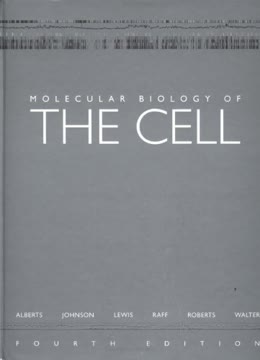
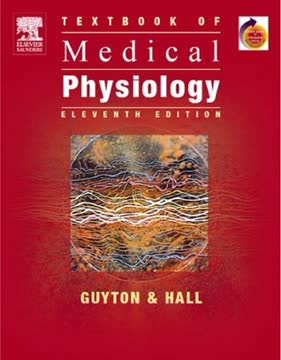

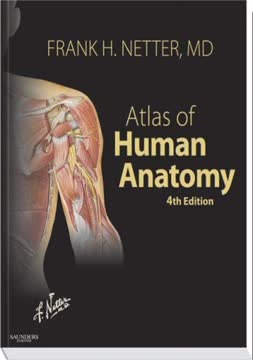
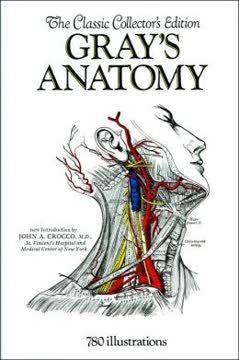


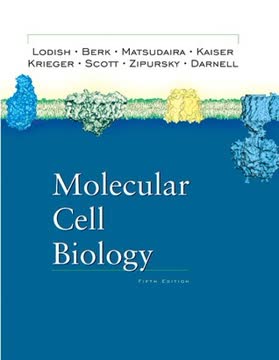
Download PDF
Download EPUB
.epub digital book format is ideal for reading ebooks on phones, tablets, and e-readers.
